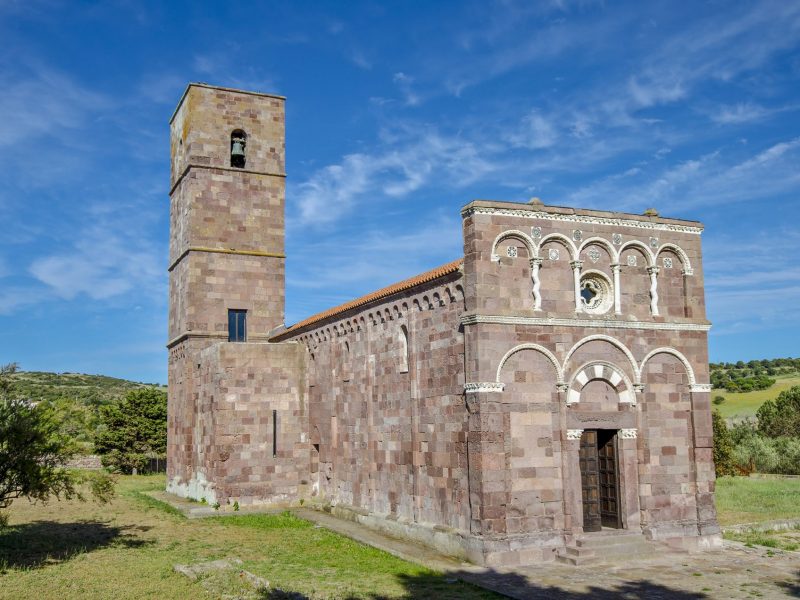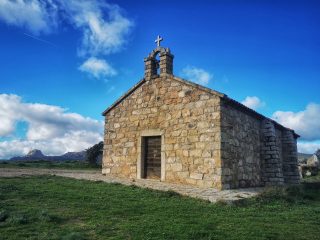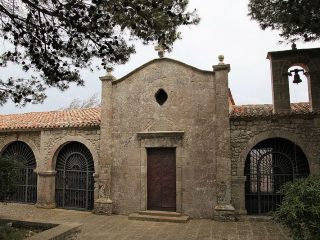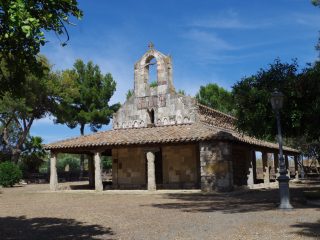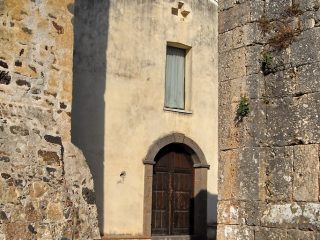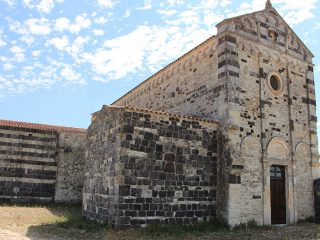The Libellus Judicum Turritanorum, a document in the Logudorese Sardinian language from the XII century, dates the church to the times of the Giudice Mariano I de Lacon-Gunale, that is, between 1065 and 1082. In the Judicate times, the most significant Benedictine monastery in Anglona was located here, and the church of Santa Maria di Tergu was connected to it. The church was then re-built in the XII century, as is clear from the inscription fragments concerning the work.
The Romanesque building with crux commissa, consists of blocks of red trachyte with limestone inserts. These materials give the facade an attractive two-tone effect. There is a bell tower next to the church which used to be accessible via an internal stairway.
There is no gable on the facade, but there are still two columns. The second order consists of a false loggia with four pillars, two of them zig zag and a quatrefoil oculus. The limestone reliefs with wheels and geometrical motifs inlaid in trachyte found in the gables and lunettes of the small arches are particularly attractive. The purplish colouring and architectural details make this church one of the most attractive buildings from Medieval times on the island.


